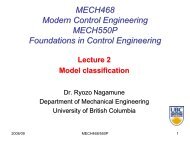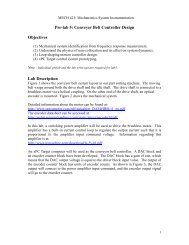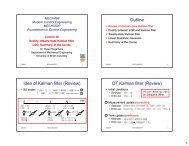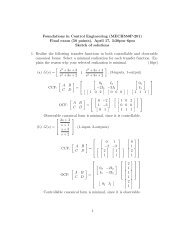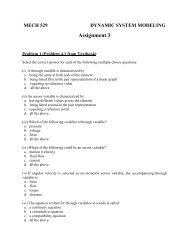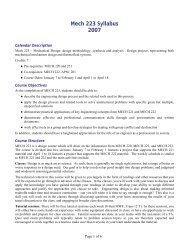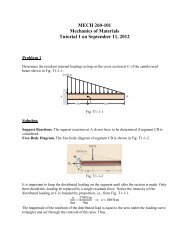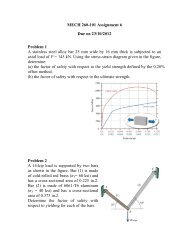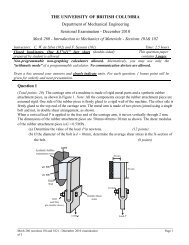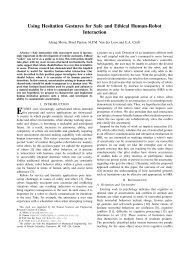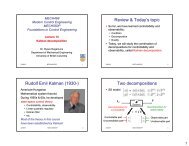Mid-term 2.pdf - UBC Mechanical Engineering
Mid-term 2.pdf - UBC Mechanical Engineering
Mid-term 2.pdf - UBC Mechanical Engineering
You also want an ePaper? Increase the reach of your titles
YUMPU automatically turns print PDFs into web optimized ePapers that Google loves.
Question 2<br />
A schematic diagram of the anchoring cable (steel) of a rigid/fixed sail post at Canada<br />
Place in Vancouver is shown. The cable is firmly attached to the top of the sail post at<br />
one end. The other end of the cable has a rigid end cap, the position of which may be<br />
adjusted by means of a tensioning device. The tensioning device has an identical pair of<br />
steel bolts with nuts, and is rigidly attached to a fixed support base. The bolts pass<br />
through the two holes in the end cap of the cable. The tensioning is done by tightening<br />
the two bolts by equal amounts.<br />
Under unstrained conditions:<br />
L = length of the cable<br />
L/10 = length of each bolt (from the nut position to the head).<br />
Also,<br />
δ = screw pitch of a bolt/nut<br />
E = Young’s modulus of cable = Young’s modulus of bolt.<br />
Assume that the area of X-section of the cable = area of X-section of the bolt.<br />
If both nuts are tightened through n turns each, in the same direction, de<strong>term</strong>ine an<br />
expression for the:<br />
(a) Tensile stress in the cable<br />
(30 points)<br />
(b) Tensile stress in each bolt<br />
(15 points)<br />
in <strong>term</strong>s of E, L, n and δ.<br />
Figure: Sail-post anchoring cable system.<br />
2




